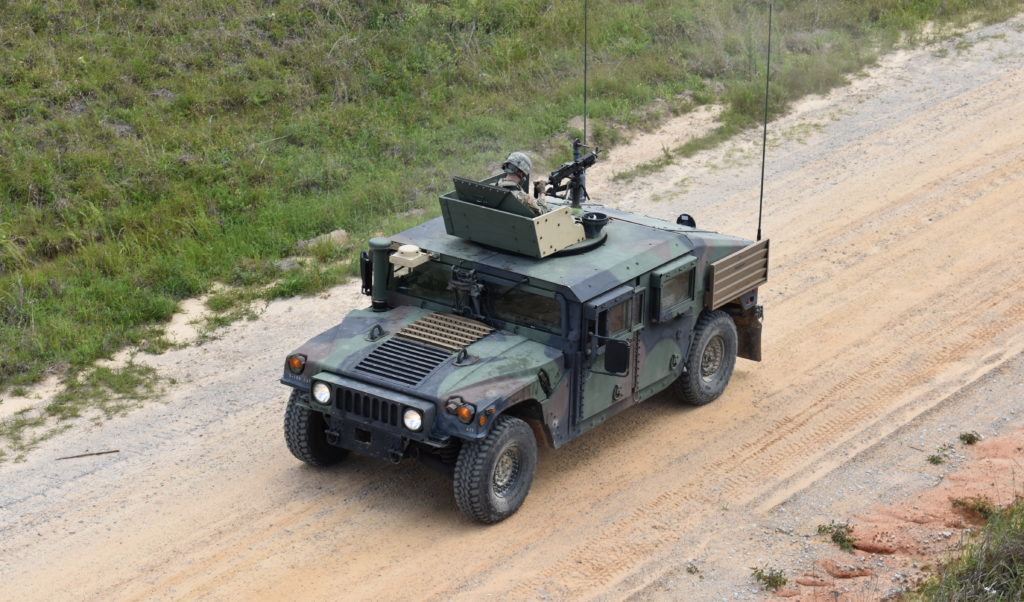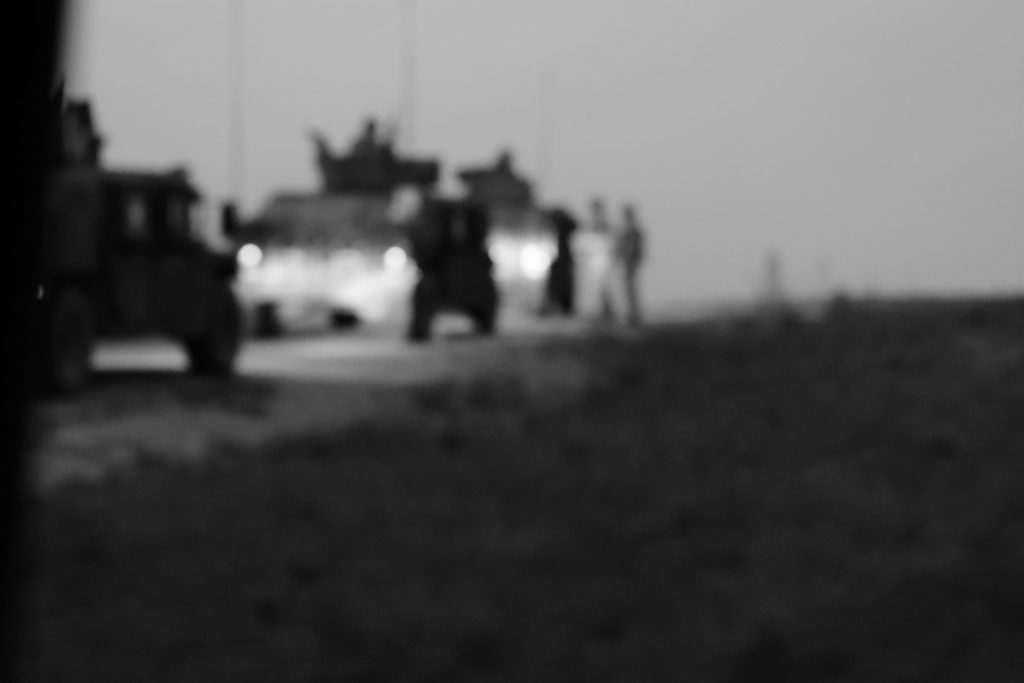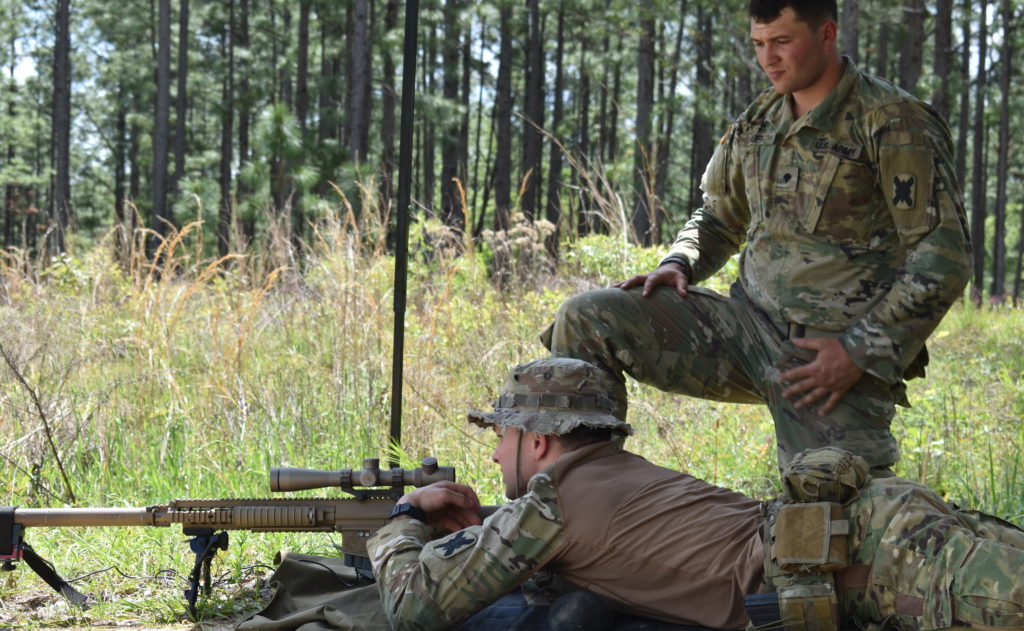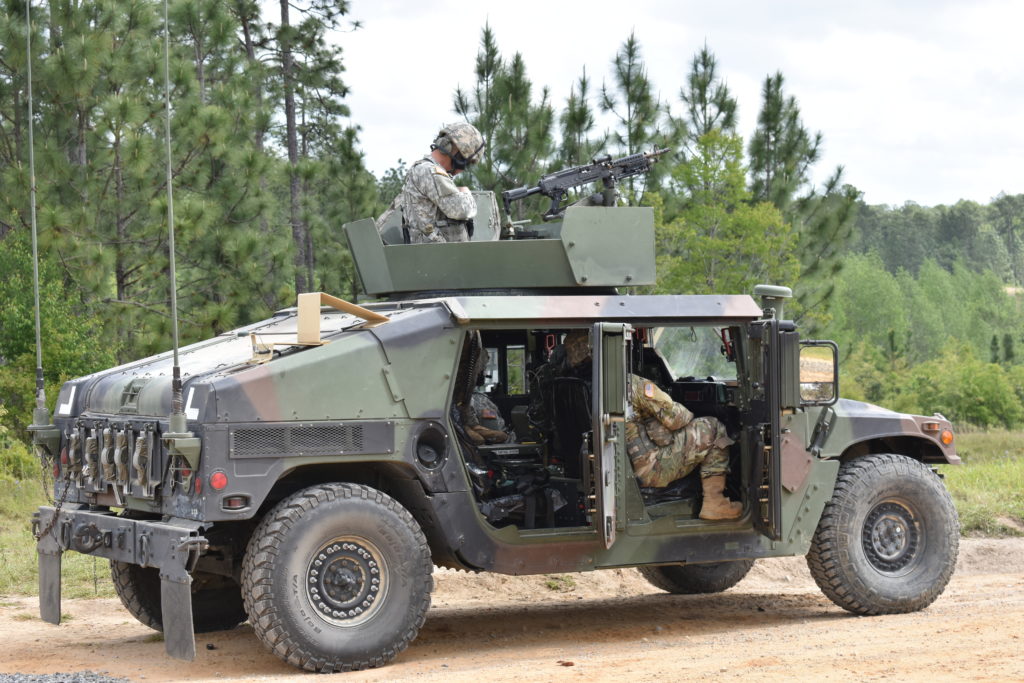CAMP SHELBY, MS, April 14, 2018-
Soldiers of the 2-108th Cavalry Squadron of the Louisiana National Guard conducted an extended field training exercise at Camp Shelby – an army installation in South Mississippi.
Their focus during the exercise was combat deployment of their heavy weapons – mainly their crew-served machine guns like the M2 and the M240 – which are mounted to the top of their HMMWV scout vehicles. These weapons are extremely important to the Squadron’s overall mission as reconnaissance troopers.
For the gunners and the truck commanders, this exercise was tough, as the pairs had to qualify with their heavy guns during the day and at night, and they had to hit targets that were at extreme distances.

A gun truck beloning to Alpha Troop, 2-108th Cavalry Squadron returns from a gun run at Camp Shelby. Photo by Joseph LaFave
“The hardest part is learning how to adjust your fire,” said Sergeant Caleb Hester, a Soldier with 2nd Platoon, Bravo Troop. The crews are only given 50 seconds to find, positively identify, and engage the targets once they pop-up. To do this, the gunner has to perform a mathematically complex adjustment – which includes elevation and distance – in a split-second.
At the end of the exercise, the Soldier who shot the best will win the Squadron’s Top Gun award – and a year’s worth of bragging rights.
While the truck crews are obsessed with being the best, the leadership is more concerned that all crews qualify. This training is a precursor to the 2-108th’s upcoming month-long combat exercise later this year.
Called the Exportable Combat Training Capability (XCTC), the exercise will see the 2-108th placed into the field in a simulated combat environment. The Squadron will be tasked with conducting reconnaissance, destroying the enemy’s reconnaissance forces, and avoiding detection.
In order to participate in the larger XCTC, the Squadron needs to get its Soldiers qualified to use their heavy guns. It’s part of the Army’s “crawl-walk-run” philosophy, explains Captain Tom Mesloh, the Squadron’s Assistant Operations Officer.
Both the gunnery training and XCTC are pre-requisites for the unit’s rotation to the Joint Readiness Training Center (JRTC) at Fort Polk, Louisiana, sometime in 2019. The JRTC rotation will be a combined arms operation, and the entire 256th Infantry Brigade of the Louisiana National Guard will be in the field fighting against another Army unit known as the “Opposition Force.”

Gun trucks belonging to Bravo Troop, 2-108th Cavalry Squadron line up for the night-fire portion of the training. Photo by Joseph LaFave
Luckily, National Guard reconnaissance units are regarded as some of the best in the entire Army.
Part of the Guard’s advantage is the unique bond between the Soldiers that you would rarely see in the active duty Army. Because Guard units like the 2-108th are drawn from geographical regions, many of the Soldiers have developed friendships that have lasted for several years, even decades.
“There are a lot of soldiers who I deployed with in 2004 and 2010 that now hold leadership positions in the squadron,” said Master Sergeant McKnight, the Squadron’s Operations Senior Noncommissioned Officer. “I’m personally vested in these guys.”
There are very few places in the world that a close relationship is more important than in a combat unit, explains Staff Sergeant Micah Hicks, Bravo Troop’s 3rd Platoon Alpha Section Leader. As a Section Leader, Staff Sergeant Hicks is responsible for leading a group of two gun trucks. Hicks needs to know his gunner is capable of effectively engaging targets without much oversight, so he can be free to attend other command issues during combat.
While the mounted Troops of the 2-108th qualified their gun crews, Soldiers from Charlie Troop trained on their weapons systems as well. Charlie Troop, unlike Alpha and Bravo, is “dismounted”, which means they walk into battle or are delivered by helicopter as opposed to riding in scout vehicles. Charlie is focused on observing targets for indirect fire support and conducting reconnaissance in hard-to-access areas of the battlefield. They are responsible for fielding lighter weapons like the 60 mm mortars, and the M110A1 sniper rifle.

Soldiers of Charlie Troop, 2-108th Cavalry Squadron dial in their M110A1 sniper rifle while training at Camp Shelby. Photo by Joseph LaFave
This will be the last opportunity the unit has to work out the kinks before it heads into XCTC, and the Soldiers will be required to put everything they’ve learned during training into practical application.
That’s why it’s so important that every opportunity to train is utilized. The leadership of the 2-108th understands that taking Soldiers into the woods of Mississippi with no ability to contact home can be stressful. They also appreciate the sacrifices that the Soldiers and their civilian employers make so that they can prepare for deployment.
The 2-108th isn’t alone in its training cycle. Many National Guard units have increased their training to meet the demands – both current and perceived- of the U.S. Military.
“The Guard’s training tempo is up, and we may see more drills per year,” said Lieutenant Colonel Jeremy Cook, the Commanding Officer of the 2-108th.

A gun truck belonging to Alpha Troop, 2-108th Cavalry Squadron waits for their turn at the gun range. Photo by Joseph LaFave
As always, the Soldiers of the 2-108th remain vigilant to meet any threat foreign and domestic. While training events such as this one can be taxing on Soldiers and their family and employers, it’s vital they take every opportunity to sharpen their edge.
The 2-108th is part of the larger 256th Infantry Brigade, which encompasses about one-third of the National Guard units belonging to the State of Louisiana. If you’d like more information about the 2-108th or the Louisiana National Guard you can visit their website at http://geauxguard.la.gov/


